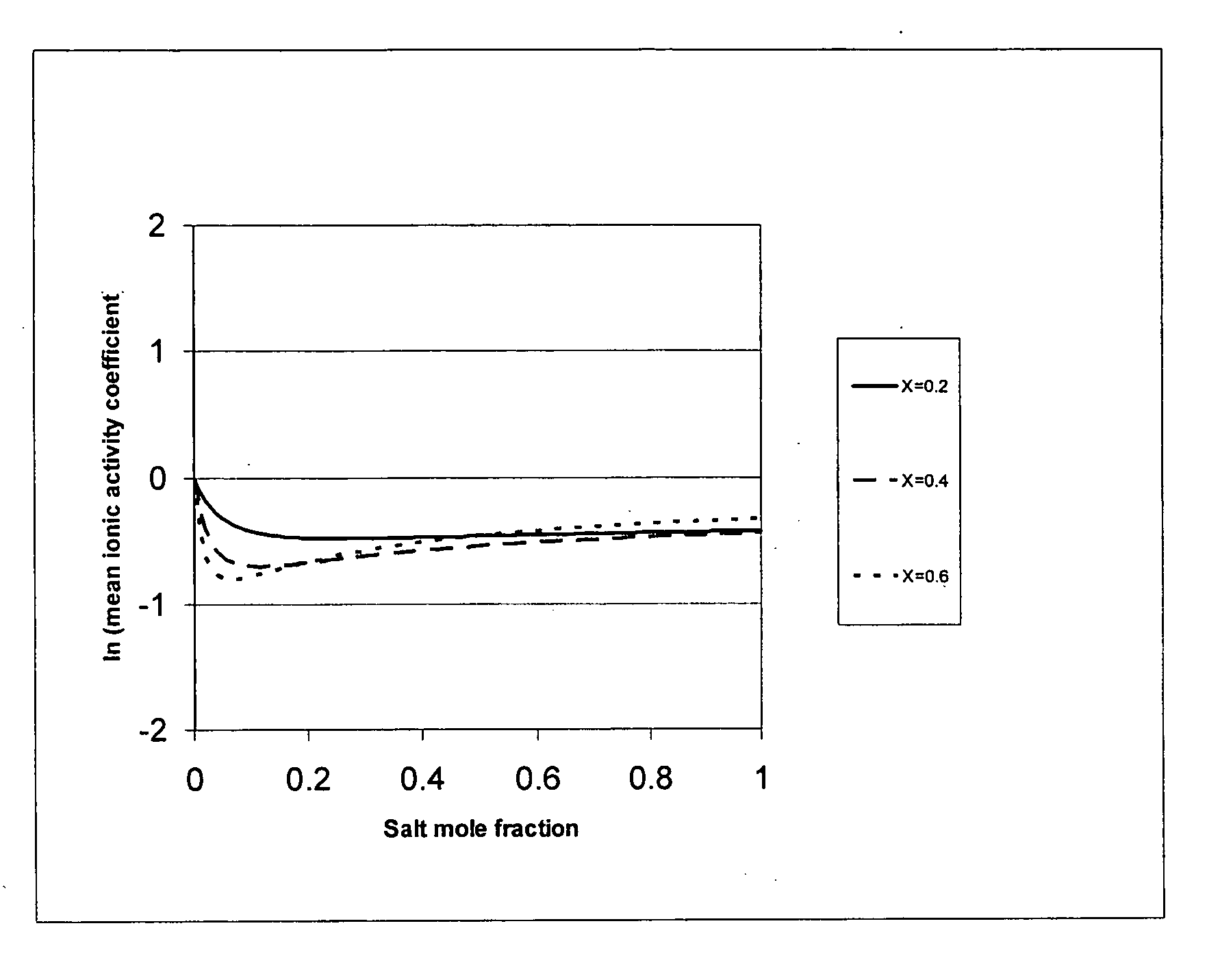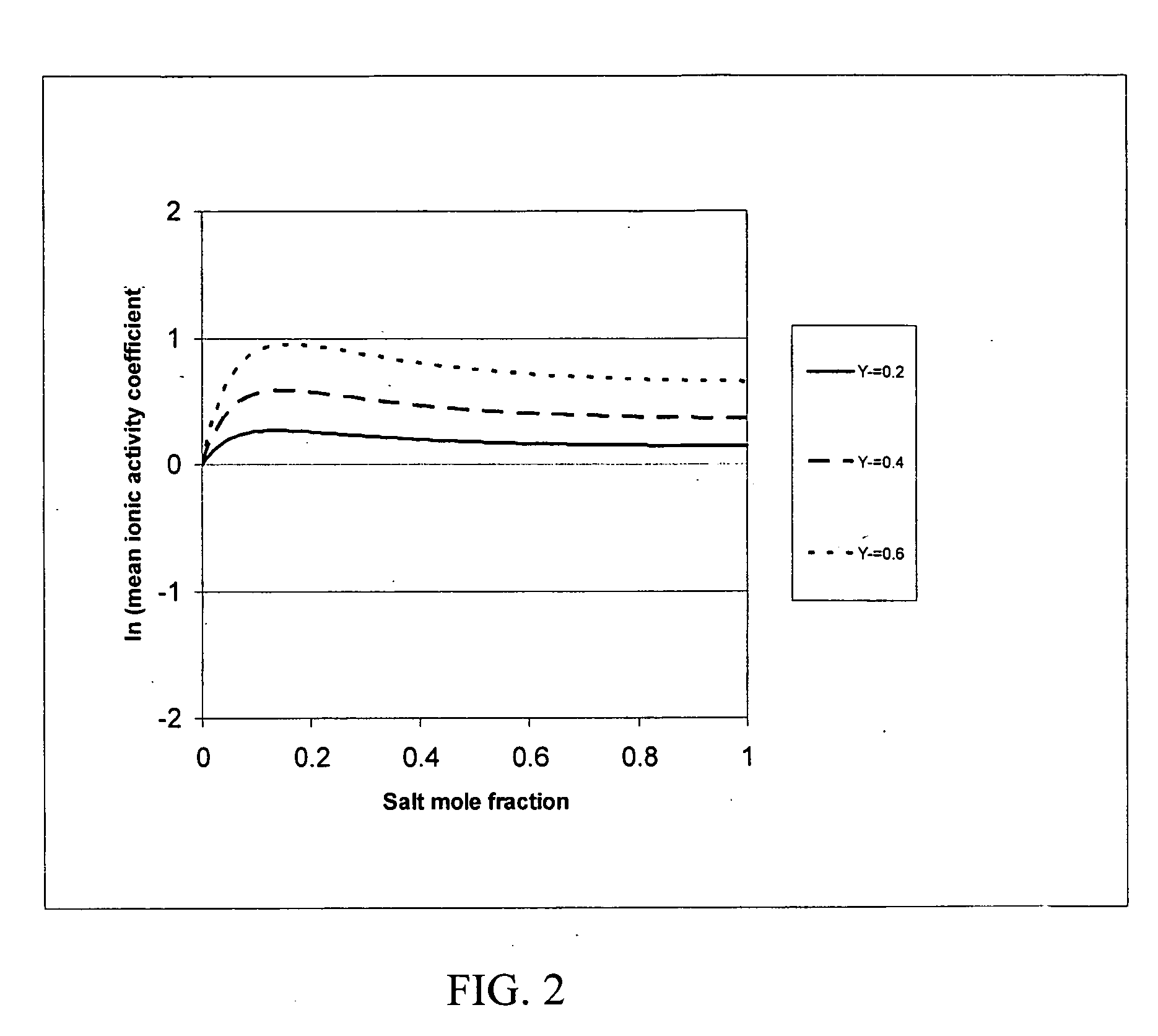Computer method and system for predicting physical properties using a conceptual segment-based ionic activity coefficient model
a computer method and a technology of ionic activity coefficient, applied in chemical property prediction, micro-instruction address formation, instruments, etc., can solve the problems of insufficient detail and insufficient coverage of the full range of potential solvent combinations, and achieve the effect of effective tool for correlation and prediction
- Summary
- Abstract
- Description
- Claims
- Application Information
AI Technical Summary
Benefits of technology
Problems solved by technology
Method used
Image
Examples
Embodiment Construction
[0039] Electrolytes are substances which exist as free ions or dissociate into free ions when dissolved to produce an electrically conductive medium. Electrolytes generally exist as salts. Salts have a vast array of chemical and medicinal applications. Predicting the phase behaviors of the electrolytes / salts can assist chemists in the design and in the synthesis of a molecule. For example, it is estimated that half of all drug molecules used in medicinal therapy are administered as salts (Stahl, P. H. and C. F. Wermuth, (Eds.), Handbook of Pharmaceutical Salts: Properties, Selection and Use, Verlag Helvetica Chimica Acta, Züirich, Switzerland (2002)). The NRTL-SAC model (parent application / invention) for organic nonelectrolytes is extended to account for the liquid phase nonideality due to presence of ionic charges in organic electrolytes. Applicants have developed a simple and practical qualitative ionic activity coefficient model to aid in designing the chemical process for salts....
PUM
 Login to View More
Login to View More Abstract
Description
Claims
Application Information
 Login to View More
Login to View More - R&D
- Intellectual Property
- Life Sciences
- Materials
- Tech Scout
- Unparalleled Data Quality
- Higher Quality Content
- 60% Fewer Hallucinations
Browse by: Latest US Patents, China's latest patents, Technical Efficacy Thesaurus, Application Domain, Technology Topic, Popular Technical Reports.
© 2025 PatSnap. All rights reserved.Legal|Privacy policy|Modern Slavery Act Transparency Statement|Sitemap|About US| Contact US: help@patsnap.com



